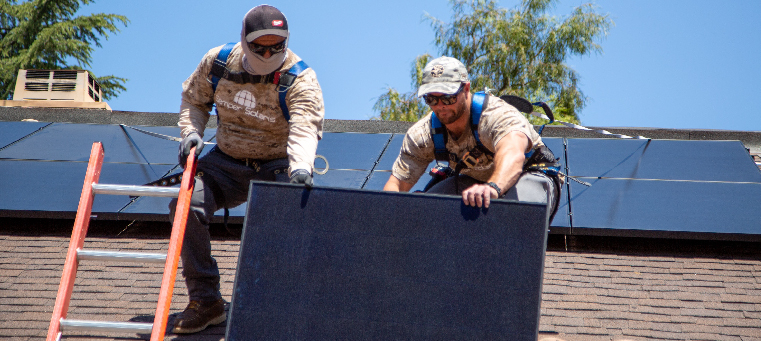




Across the United States, more and more people are starting to invest in solar power systems. They are outfitting their roofs with solar panels — and why not? Solar power technology has seen incredible advancements in recent years, many of which have helped to lower the cost of the equipment involved. Installing solar panels on your roof is also a wonderful way to generate electricity for your home and business, as well as the grid, without increasing your impact on the environment.
However, there are many things that you need to consider before you jump in and start the installation process. Understanding the different factors involved in a project like this is so important — taking a look at common solar panel myths is a good idea, too.
To help you decide whether or not solar power is the right option for you, your home, or your business, we’ve put together a list of the top 6 things you need to take into consideration before you install those rooftop solar panels.
Before you even consider installing solar panels, ask yourself, how old is my roof? If you know that you will need a new roof soon, or that a part of your roof is damaged, it probably isn’t the best idea to install solar panels. If you can, take care of any Roof Installations before the installation. That way, you won’t need to pay extra to dismantle the work and then put it up again (in some cases for at least 20 years).
Another aspect to consider is the warranty on your roof compared to the warranty on the solar panels. If you have solar panels that will last for 20 years and a roof that will only last between 10 – 15, it increases the cost of maintenance. Try to match both projects in terms of how long they will last in order to reduce the amount of effort, time and money you will need to invest.
Roofs come in many different shapes and sizes. Before you go ahead with any installation, make sure that your roof has enough space for the solar panels. If there isn’t enough room, you likely will not get the return you expect on your investment.
Solar panels require specific placement in order to generate the maximum amount of power. Most professionals say that the best placement is to have the panels face south while others say west. Regardless, this information is important for you to determine before the installation starts.
Installing solar panels will increase the weight on the structure of your roof. If the weight of these solar panels is too much for your roof to handle, there is a potential that it will collapse. This is very dangerous for many reasons, not to mention costly. To avoid both situations, it is critical to have a professional evaluate your roof to determine if additional support is required to complete the installation.
When it rains, water runs down the roof, into the gutters and out and away from your home. When installing solar panels in Bakersfield, equipment like racking and wire harnesses can prevent the water from flowing and draining properly. In some cases, solar equipment can move the water in a different direction, which can create leaks and other problems. These problems will need repair, which means the solar panels will need to be removed.
To avoid all of these issues, make sure that you inform your contractor of these concerns. They will be able to present a plan for you to prove that the installation will not impact the water runoff in any way.
Part of maintaining your solar power system is dealing with severe weather like lightning storms, hurricanes, hail, and more. There is a potential for some solar power equipment to get damaged during these events. While some insurance will cover these types of events, it is something to consider, especially if you live in an area where this type of weather occurs often.